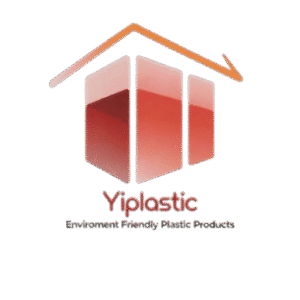It is constructed entirely of panels composed of a thermoplastic polymer known as Lexan. Clear, translucent, or opaque panels are available, as well as colorful panels. Due to the material’s distinctive appearance in comparison to fabric or metal awnings, it presents a fascinating alternative for constructing window and door awnings.
Flat panels can be used to construct the roof of a polycarbonate awning, and side panels can be added to create a box-style design. Additionally, a polycarbonate awning can be formed of arches or very slightly curved shapes, either alone or in succession, to create a scalloped impression. Additionally, due to the material’s flexibility, it may be molded into other shapes, including a dome.
This material looks great when framed in stainless steel or another plain material, or it can take on an exquisite appearance when framed in filigree-style panel supports on each side.
A polycarbonate awning has numerous benefits.
These awnings are an excellent alternative for protecting people, doors, and windows from the sun and bad weather when you want all the practical benefits of an awning with minimal cosmetic impact on the façade of your building. That can be critical if you want to maintain the exterior’s historic “presence” without covering up beautiful stonework or architecturally intriguing window and door moldings.
On the other hand, a polycarbonate awning can be a very straightforward, basic addition to any style of structure or company.
Polycarbonate is a very strong and durable material. Life expectancy is normally between 10-15 years, with the majority of manufacturers having 10-year or longer guarantees. This is why:
- Due to the material’s excellent impact resistance, it is nearly unbreakable. While bulletproof glass is not required, any business in New York City or the surrounding areas desires an awning capable of withstanding hurricane-force winds. That is possible with a polycarbonate awning.
- Polycarbonate possesses exceptional optical qualities, blocking up to 99 percent of the sun’s UV rays while allowing natural light to pass through, making it a perfect choice for protecting people and property. These same qualities help a polycarbonate awning resist sun, snow, and rain-related damage such as warping, fading, yellowing, or other discoloration.
- Due to its strong resistance to harsh heat and cold, it outlasts many other common awning building materials. Additionally, it is fire-resistant. It is extremely lightweight, allowing for a lighter frame without losing strength or longevity. Transportation and installation are simplified, which helps to keep costs low.
There are a few drawbacks as well.
Polycarbonate has a higher price tag than other materials. You may have heard of an alternative known as ABS (acrylonitrile butadiene styrene), which is far less expensive but is also less robust and resistant to heat, making it an unsuitable material for a business awning.
Polycarbonate can be scratched or marred, and it is extremely sensitive to abrasive and alkaline cleaning agents. Inquire with your awning professional about protective coatings for polycarbonate awnings. Additionally, it is not a viable option if you are pursuing LEED certification or your organization is committed to sustainability, as the production process is not ecologically friendly.
A polycarbonate awning is not conducive to the intricate design. It is, in fact, the decoration, which makes it ideal for ultra-modern, sleek aesthetics but not suitable for every architectural style. As a result, these awnings earn good scores for their functional advantages, but not so much for their ability to support the type of company marketing potential offered by other forms of awnings, particularly fabric.
A polycarbonate awning offers a striking visual contrast to other types of awnings. Is this the best appearance for your application? A commercial awning firm can assist you in weighing the benefits and drawbacks based on your business’s requirements and budget.
What exactly is an awning window?
Awning Window Definition – What is an Awning Window? Awning windows have a sash that is attached across the top and opens up and out in the manner of an awning. They are horizontal, which allows for expansive views of the outdoors. They crank open, give excellent ventilation, and, because they open outward, allow you to leave the window open on rainy days.

Polycarbonate roofing sheets have several advantages.
Polycarbonate panels are resistant to impact and are almost indestructible. This is why bulletproof police shields are constructed using them. UV protection is another significant advantage of these panels, which makes them the ideal material for awning construction in commercial structures. Due to the panels’ minimal weight, they may be easily transported and put in any location.
Polycarbonate panels are the chosen material for greenhouse construction because of their superior features. These panels are resistant to heat, sunshine, snow, and rain, which means they will retain their color and appearance for many years without fading or discoloring.
Conclusion
Awning windows are an excellent choice for your home, but there are several factors to consider. When speaking with your window consultant, make sure to discuss your goals – they’ll provide good guidance to assist you in selecting the window design and brand that’s ideal for you.

